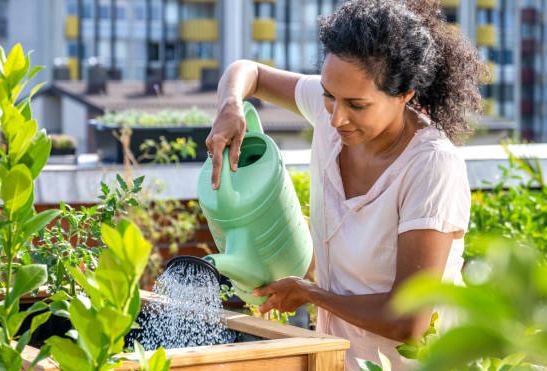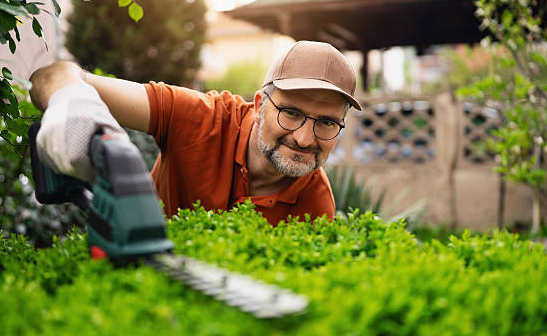Whether it’s a villa garden or a small private garden, maintenance is key to keeping it looking great. With careful upkeep, your garden’s beauty can last for years. So, how can you properly maintain your garden? Here are some essential tips you should definitely save for future reference!
1. Watering
When it comes to watering plants, soft water is ideal. River water is best, followed by pond or lake water. Spring water is not recommended. In urban gardens, tap water can be used, but since it’s often treated with bleach or other chemicals, it’s best to let it sit for a few hours or leave it in the sun for a while before using it to water your plants.

A few guidelines for watering:
-
During summer and autumn, water more often; during rainy seasons, water less or not at all.
-
Avoid watering at midday during high temperatures. Instead, water in the early morning or evening.
-
In winter, water less, and on sunny days, try to water around 10 a.m.
-
For seedlings, water sparingly; during vigorous growth or flowering, water more.
-
Spring watering is best done around noon.
-
Avoid watering directly at the root. Instead, aim for the surrounding root zone to encourage the roots to spread out.
-
Follow the principle of “start with a fine spray, then gradually increase the flow, and end with a smooth finish” to prevent soil erosion.
Use a watering can with both fine and coarse nozzles—avoid pouring water directly from a cup or bowl into your pots.
2. Soil Loosening and Weed Removal
Soil loosening and weed removal are key to plant care. If neglected, they can severely affect plant growth. Over time, due to rain, watering, and fertilization, the top layer of soil may become compacted, which reduces its ability to drain and aerate, thus harming root growth. Regular soil loosening helps restore proper soil conditions.
Don’t work the soil when it’s too wet. Tools like a small hoe or bamboo sticks are great for loosening soil in flower beds, while small bamboo sticks can be used for potted plants. Avoid damaging the roots—loosen the soil just enough to help aerate it.
Weeds should be removed by pulling them out by the root, especially before they flower and spread seeds. For smaller gardens, hand-pulling weeds is sufficient. For larger areas, you can use chemical herbicides.

3. Pruning
Pruning is vital to controlling plant growth, improving airflow, and preventing pests. Overgrown plants with dense foliage can block light and air circulation, making them susceptible to diseases. Proper pruning ensures healthy growth and encourages flowering.
Here’s how to approach pruning:
-
Branch Cutting: Remove dead, diseased, or overcrowded branches to improve airflow and sunlight penetration.
-
Leaf Removal: If the plant has too many leaves, especially older ones, removing some helps with flowering.
-
Pinching Tips: Pinch off the top of young plants to encourage branching. This promotes bushier growth and increases flowering potential.
4. Shaping
When plants are disorganized and have uneven growth, even if they are blooming, they might not look aesthetically pleasing. To improve the visual appeal of your garden, shaping your plants is a must.
There are several shaping techniques:
-
Single-stemmed: For certain plants like dahlias, leave only one main stem and remove side shoots to concentrate nutrients at the top.
-
Multiple-stemmed: In plants like chrysanthemums, prune side shoots to form 3-7 main stems.
-
Bushy style: For shrubs and bamboo, maintain a balanced, dense appearance to enhance the aesthetic.
-
Trailing or climbing: For vine-like plants, use a trellis or support to guide growth upward or downward.
Start shaping from a young age to achieve the desired form.
5. Thinning Seedlings
By the second year of garden life, thinning your seedlings in spring is essential. After a long period of growth, many plants become overcrowded. This excessive density can hinder proper growth and reduce the garden’s overall aesthetic. Thinning seedlings allows the plants to develop better and improves the garden’s appearance.

6. Pond Maintenance
Ponds require regular cleaning to prevent algae and debris buildup. Here’s how to care for your pond:
-
Drain the pond, remove all living creatures, and use a brush to clean the walls and remove algae and dirt.
-
After cleaning, leave the pond exposed to sunlight for 2 days or let it air dry for 3 days to kill most bacteria before refilling it.
7. Maintenance of Wooden Garden Features
Outdoor wooden features, like fences or benches, will eventually wear down due to exposure to the elements. To extend their life, it’s necessary to maintain them. A good rule is to clean and repaint these wooden items annually to prevent decay and prolong their service life.
8. Sculpture and Garden Ornaments Care
Garden sculptures can collect dust and grime over time. Clean them regularly with a soft brush to maintain their appearance. Avoid using sharp objects or tools like knives to scrape them, as this can damage the surface.
Treat your garden with care, and it will continue to bring you joy for years to come. Use these tips to make sure your garden remains beautiful and well-maintained—effortlessly!

